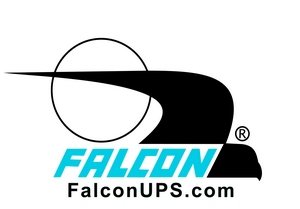The symposium committee is pleased to announce that Falcon Electric has come on board as a sponsor for the upcoming 2013 ISA Water / Wastewater and Automatic Controls Symposium. The 2013 symposium will be taking place Aug 6-8, 2013 at the Crowne Plaza Orlando-Universal Hotel in Orlando, Florida.
Falcon Electric, Inc. is a leading manufacturer of award-winning, on-line Uninterruptible Power Supplies (UPSs), frequency converters and ac voltage regulators. Founded over 25 years ago, we introduced the first patented, high-frequency transformerless on-line UPS technology to the U.S. market. Since then, Falcon’s power solutions have continually set technological benchmarks for quality, reliability and performance, with over a million units installed.
Industry-leading customers such as Siemens, Alcoa, NASA, Raytheon, Xerox, Chevron, L-3, Boeing and the U.S. Military rely on Falcon’s power solutions. Users can easily integrate Falcon’s products into their systems. Our design, manufacturing and technical expertise in field-proven, wide-temperature, rugged UPSs (-30°C to 65°C) allow us to solve power problems in some of the harshest environments on the planet.
From protecting vital 911 response systems and transportation equipment to powering critical military systems, Falcon Electric solves complex power requirements that most companies are unable to accommodate. We offer the unique service of providing customers with direct access to our engineers and technical support staff to discuss specific requirements.
Falcon Electric is also pleased to offer the bellow technical article about UPSes as part of this blog post:
Technical Article from Falcon Electric:
Raising the Standard of Power Quality
Perhaps the only thing as dirty as the untreated water that enters a Wastewater facility is the AC power. Clean AC power is the foundation which all automated systems, instrumentation and laboratory equipment is based upon. A typical Wastewater facility is chartered to deliver a clean and safe supply of water for a city, a county or an entire region. In every case, the process of treating sewage, runoff water from storm drains and a myriad of other sources to produce a potable supply of water is so essential that Federal government sets precise standards on water quality.
However for electrical power, it might start out with good quality from the utility, but once it enters your facility, the power quality can quickly degrade. Power issues that can wreak havoc on the tight production schedule of a typical lab manager, designer or maintenance technician include brownouts, sags, surges, spikes and blackouts. Typically, the SCADA system that controls the processes of dozens, if not hundreds of nodes, depends on a clean, steady flow of electricity. In the laboratory, the myriad of instruments, such as Gas Chromatography Mass Spectrometers (GCMS) also need clean power to operate and can end up being a bottleneck in the throughput of the plant if GCMS systems cannot produce test results due to power problems.
Of all the devices labeled “uninterruptible power system” or “UPS,” only a small fraction of them are up to the task of fully protecting SCADA systems and other automated and testing processes. Only UPSs that are of a true on-line design, which regenerates and regulates new AC power from incoming AC power, provide the power quality that is required by critcal types of systems. Office-grade UPSs known as off-line and/or line-interactive feed incoming alternating current with all of its problems, directly through the UPS to the connected load. They only switch to inverter back-up power after AC power is lost. Also, when these types of UPSs switch to battery backup mode, they cause a power drop-out from 4 to 25ms at their output. This can cause costly disruptions to sensitive microprocessor-based equipment connected to the UPS output.
Conversely, the on-line UPS is ideal for powering computerized equipment as it converts unstable incoming AC power, to regulated DC power, removing most AC power problems. The regulated DC power is then fed into a Pulse Width Modulated (PWM) DC to AC inverter where clean AC power is regenerated and tightly regulated. The output voltage regulation is typically ±2% while the UPS is operating from an AC source having a ±20% voltage swing. And, it’s not just the topology that’s important. Many SCADA environments are located in harsh temperature environments that can wreak havoc with battery-based UPS systems. The hotter the temperature, the faster UPS batteries degrade making them less available for the next power hit.
When it comes to considering your next UPS, look for a UL Listed, wide-temperature rated device (able to operate from -20° to 55°C) with options such as conformal coating of the printed circuit board and hard-wire options. For designers and integrators, look for vendors that offer both the UPS and enclosures as a turn-key option.
By knowing that not all power protection devices are the same, you can make a more informed decision on which is the right UPS for your application.

